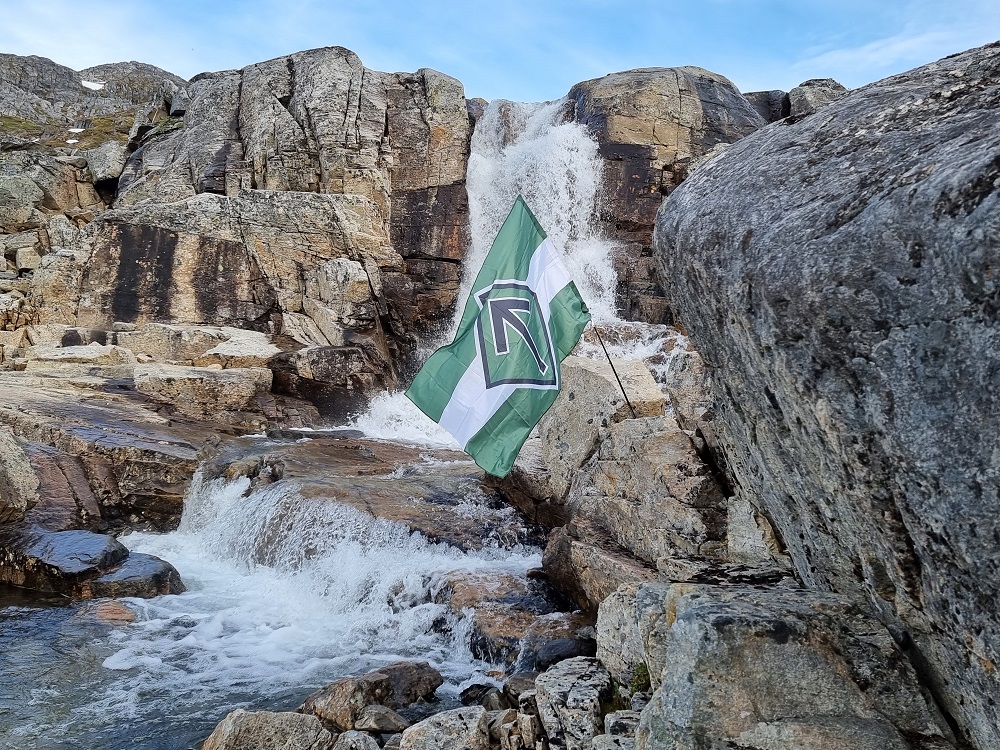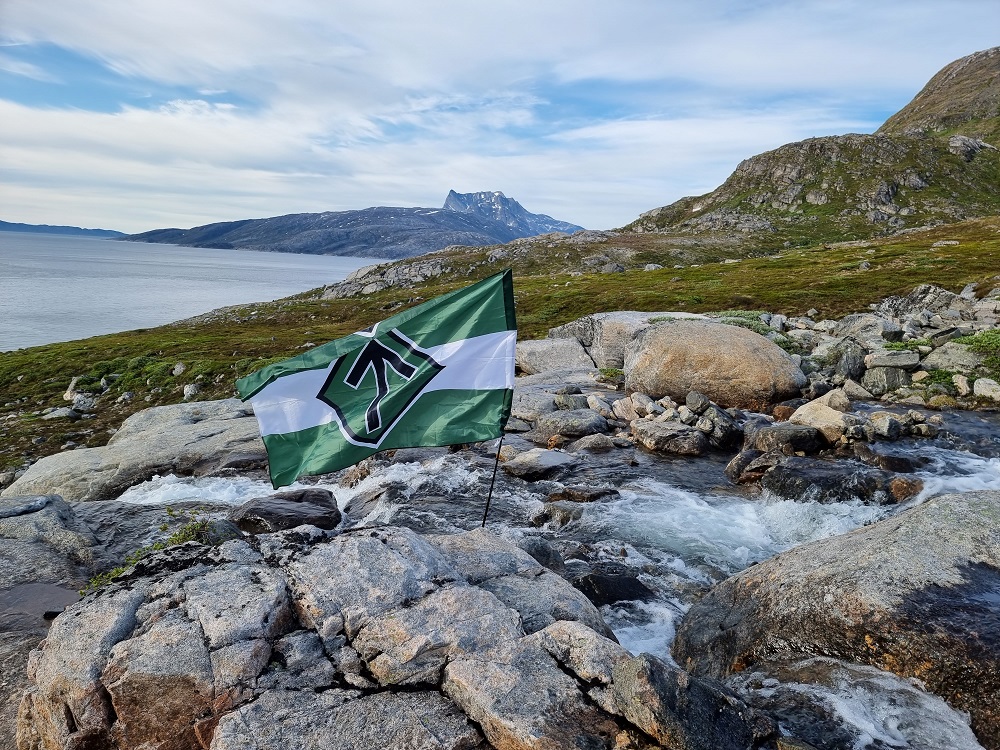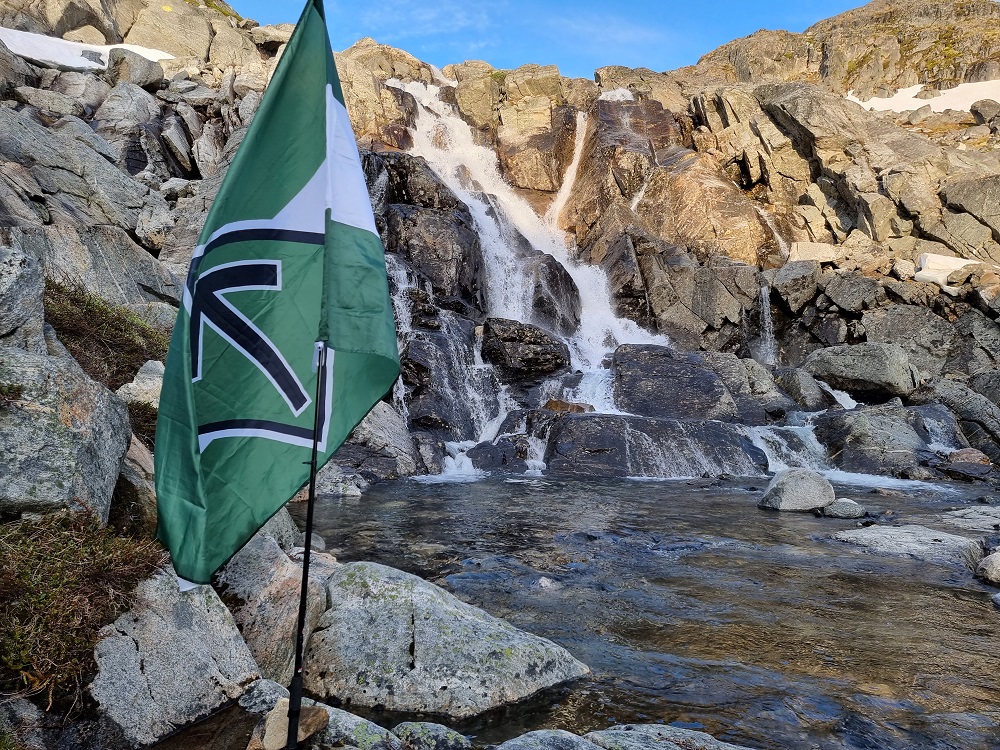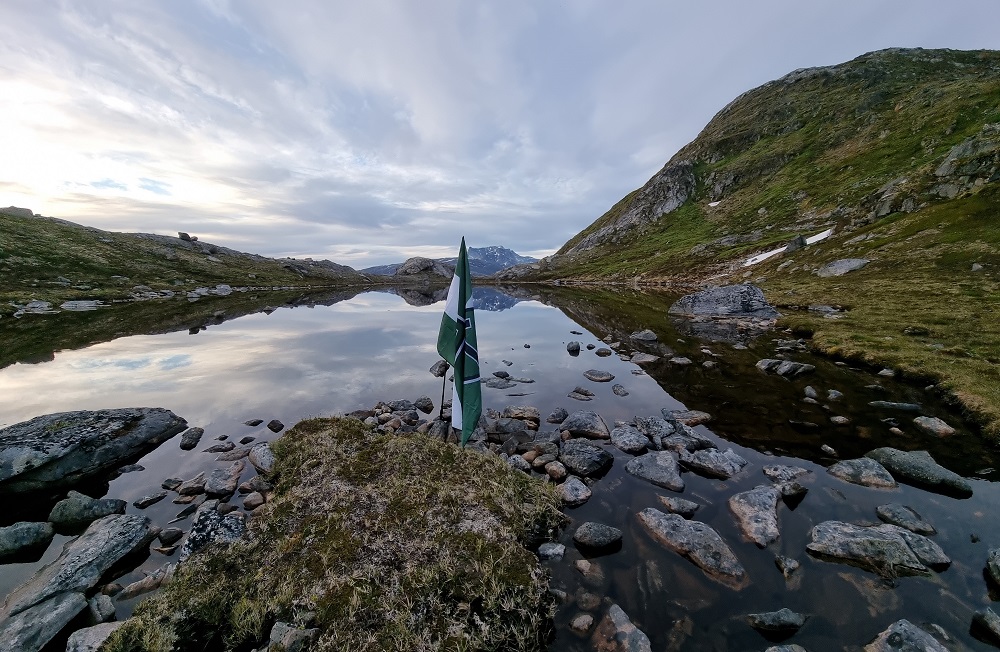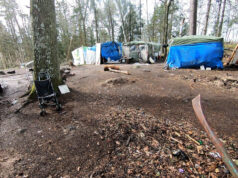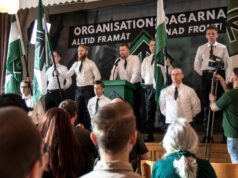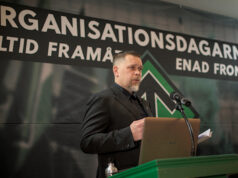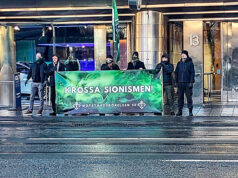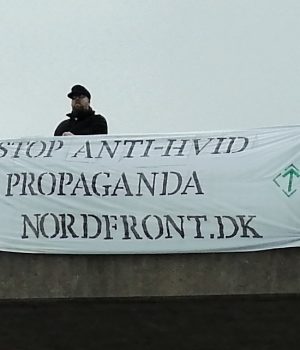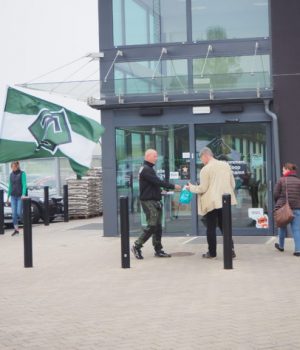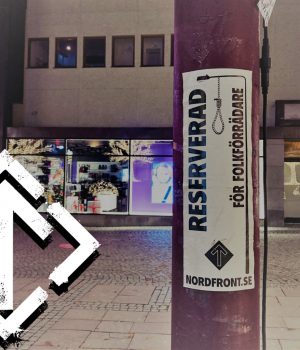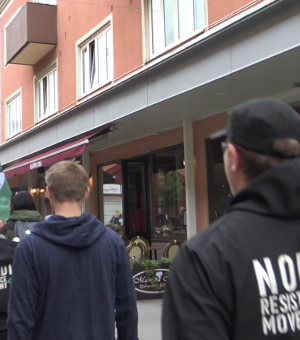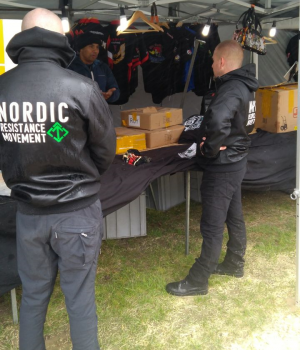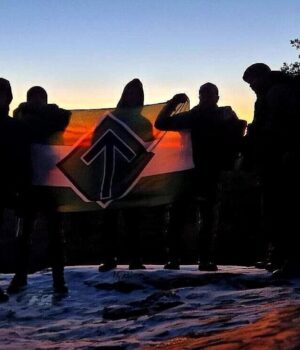GREENLAND. National Socialists have sent a message from Greenland, where they have been on an excursion in beautiful scenery with the Resistance Movement’s Tyr rune flag.
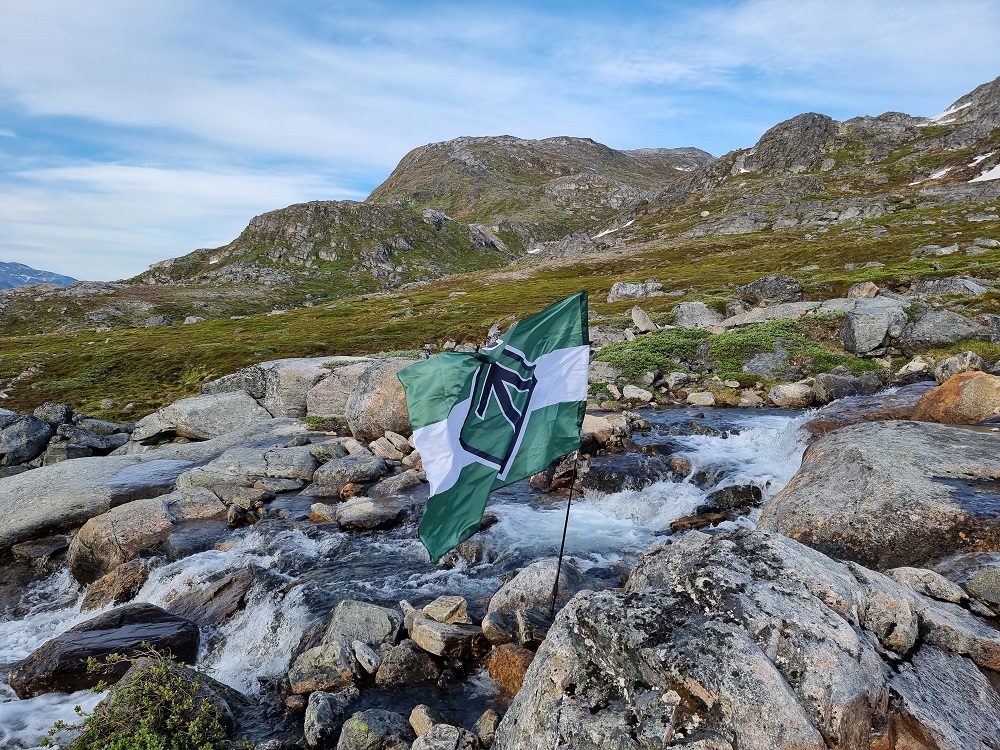 Supporters of the Nordic Resistance Movement have sent a postcard from Greenland. It reads:
Supporters of the Nordic Resistance Movement have sent a postcard from Greenland. It reads:
On a short hike out in the country. The Resistance Movement’s flag was brought along and photographed in the scenic surroundings.
More photos:
A brief history of Greenland
Greenland’s connection with Denmark arose through Norway. Emigrants from Norway to Iceland, and from there to Greenland in 982, placed the lands under the rule of the Norwegian king in 1261 as tax lands or dependencies. The Norwegian-born Viking Erik the Red (born circa 950) was one of the first settlers, and he called the island Greenland to attract new residents from Iceland and Norway. In the 1400s, the Norse settlement of Greenland ceased temporarily, while the neo-Eskimo immigration from circa 1000 spread along both coasts.
In 1721, a lasting connection was re-established between Greenland and Denmark-Norway through the Norwegian priest Hans Egede (1686-1758), a missionary who was supported by Frederik IV (born 1671, regent 1699-1730).
During the Revolutionary and Napoleonic Wars, travel in Greenland was severely restricted, but the Treaty of Kiel in 1814 saw Greenland remain in Danish possession.
In connection with the sale of the West Indies to the United States in 1917, Denmark was recognized for its claim of sovereignty to all of Greenland. A number of other countries welcomed the claim and accepted in 1921 that all of Greenland was under Danish rule.
Only Norway objected. Norwegian sealers had hunting interests on the East Coast which they did not want to lose. This led to an intense assertion of Danish sovereignty. The conflict culminated in 1931 with a Norwegian “occupation” of areas in East Greenland and a subsequent trial in 1933 at the International Court of Justice in The Hague, which confirmed Denmark’s sovereignty in East Greenland.
The Home Rule Government of Greenland was first discussed in a purely Greenlandic Committee from 1971-75 and then in a Danish-Greenland Home Rule Commission from 1975-79. This process saw a split in the social democratic Siumut party, with a younger wing forming to become the separatist socialist party Inuit Ataqatigiit (United Inuit) in 1977. In the same year, the liberal party Atassut (Cohesion) was founded, which placed great emphasis on cohesion with Denmark. Thus the three largest political parties were formed, and they all came to play a crucial role in Greenland’s further development.
The Home Rule Government was introduced on 1 May 1979 by the Greenland Home Rule Act. The law emphasizes that Greenland occupies a special position in the Danish kingdom, and that it is a “special society”. The home government consists of the elected Parliament of Greenland and the National Government, which share political responsibility.
A desire to have the home rule scheme replaced by a self-government scheme became a reality, and self-government came into force on 21 June (Greenland’s National Day) in 2009, following its adoption by the Danish Parliament and the Parliament of Greenland.


